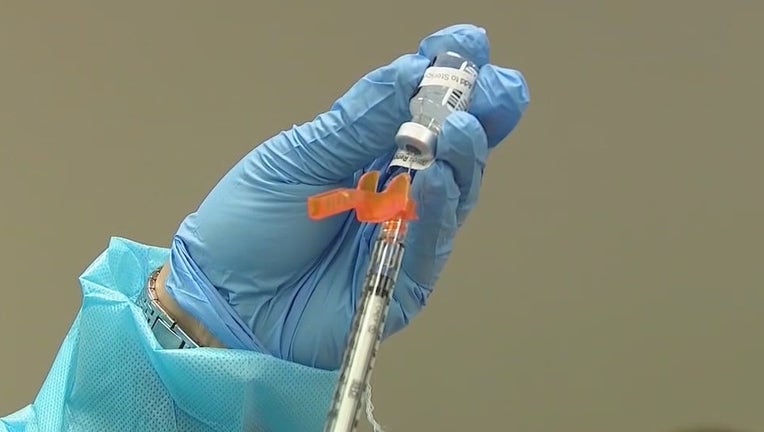50% of Arizona’s population vaccinated for COVID-19

PHOENIX - Arizona reached a coronavirus milestone on July 8 with 50% of its population having received at least one dose of COVID-19 vaccine.
Administration of an additional 11,810 doses put the state’s count of people who are at least partially vaccinated at nearly 3.6 million, according to the state Department of Health Services’ coronavirus dashboard.
Nationally, 55.1% of the population had received at least one dose as of Wednesday, according to the federal Centers for Disease Control and Prevention.
Arizona’s vaccine administration peaked in early April with up to 78,000 a day after the state opened appointments to people 16 and older in late March.
Vaccination rates began slipping in late April before dropping in May to about half the peaks seen in early April and even lower more recently.
The state has closed its mass vaccination sites due to the decreased demand and instead promoted availability of vaccines at health clinics, pharmacies and pop-up events.
In their continued push to encourage people to get vaccinated, state officials recently have pointed to the increasing prevalence of a COVID-19 variant that spreads more easily.
MORE: Find COVID-19 vaccine locations in your area
"The best way to prevent getting the delta variant or any type of COVID is to get vaccinated as quickly as possible," said Dr. Cara Christ, the Department of Health Services director.
The state on Thursday reported an additional 725 confirmed cases and no additional deaths as the number of people hospitalized for COVID-19 continued to fluctuate between 500 and 600.
According to Johns Hopkins University data, Arizona’s seven-day rolling average of daily new cases rose over the past two weeks, from around 431 on June 22 to nearly 487 on Tuesday as the rolling average of daily deaths in Arizona declined from 11 to 9.7.
Coronavirus in Arizona
- Arizona’s confirmed COVID-19 death toll reaches 18,000
- Fauci says all 3 COVID-19 vaccines effective against delta variant
- COVID-19 vaccine site at Gila River Arena closing
- What should I know about the delta variant?
- Fauci: 99.2% of US COVID-19 deaths involved unvaccinated people
In order to protect yourself from a possible infection, the CDC recommends:
- Avoid close contact with people who are sick.
- Avoid touching your eyes, nose, and mouth.
- Stay home when you are sick.
- Cover your cough or sneeze with a tissue, then throw the tissue in the trash.
- Clean and disinfect frequently touched objects and surfaces using a regular household cleaning spray or wipe.
- Cover your mouth and nose with a cloth face cover when around others
- Wash your hands often with soap and water for at least 20 seconds, especially after going to the bathroom; before eating; and after blowing your nose, coughing, or sneezing.
- Monitor your health daily
Symptoms for coronavirus COVID-19 include fever, coughing, and shortness of breath. These, of course, are similar to the common cold and flu.
Expect a common cold to start out with a sore or scratchy throat, cough, runny and/or stuffy nose. Flu symptoms are more intense and usually come on suddenly, and can include a high fever.
Symptoms of COVID-19 may appear more slowly. They usually include fever, a dry cough and noticeable shortness of breath, according to the World Health Organization. A minority of cases develop pneumonia, and the disease is especially worrisome for the elderly and those with other medical problems such as high blood pressure, obesity, diabetes or heart conditions.
RELATED: Is it the flu, a cold or COVID-19? Different viruses present similar symptoms
To protect yourself, wash your hands well and often, keep them away from your face, and avoid crowds and standing close to people.
And if you do find yourself showing any of these flu or coronavirus symptoms - don't go straight to your doctor's office. That just risks making more people sick, officials urge. Call ahead, and ask if you need to be seen and where.
Tune in to FOX 10 Phoenix for the latest news:
Get breaking news alerts in the FREE FOX 10 News app. Download for Apple iOS or Android.

